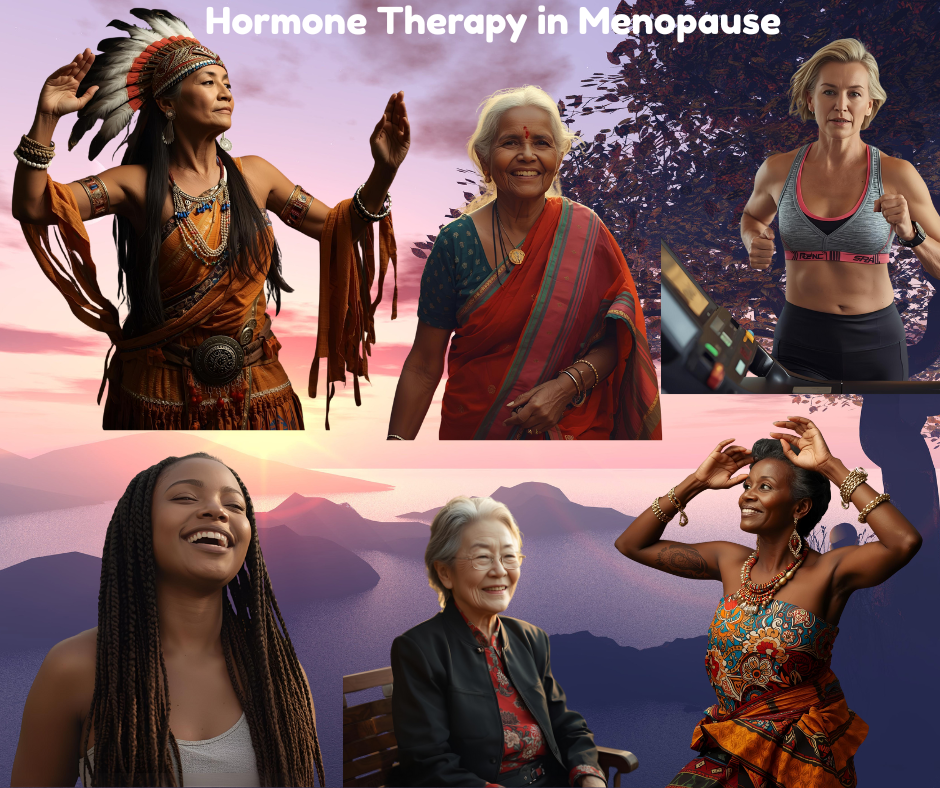
Menopause is a natural part of life, but the symptoms that come with it—like hot flashes, night sweats, trouble sleeping, mood changes, and vaginal dryness—can be overwhelming. For decades, doctors have turned to hormone therapy (HT) to help women feel better during this transition. But the conversation around hormones has been confusing. Some patients are told hormones are too risky, while others hear they’re safe and effective. So, what’s the truth?
This article will walk you through the history of hormone therapy, what we know now, and why today’s treatments deserve a fresh look.
A Quick Look Back: How We Got Here
- 1940s–1970s: Estrogen was first used to relieve menopausal symptoms and became very popular. But by the 1970s, doctors realized estrogen alone increased the risk of uterine cancer in women who still had a uterus. Adding progesterone solved this problem.
- 1980s–1990s: Millions of women used hormone therapy. It not only helped with hot flashes and vaginal dryness, but studies suggested it might protect the heart and bones.
- 2002: The large Women’s Health Initiative (WHI) study reported that one type of hormone combination (Premarin + Provera) increased risks for heart disease, blood clots, and breast cancer. Overnight, prescriptions dropped by almost 80%.
The problem? The WHI studied mostly older women who were years past menopause, not the younger women typically seeking help for symptoms. And the study only looked at certain hormone types—not the ones most commonly used today.
What We Know Now
Research over the last 20 years has shown that not all hormones are the same. The type, dose, and timing of therapy make a big difference.
- Estradiol (E2): This is the same estrogen your body naturally makes. It can be given as a pill, skin patch, or gel. Estradiol helps with hot flashes, night sweats, vaginal dryness, and bone loss. It may even lower the risk of breast cancer and heart disease when started around the time of menopause.
- Micronized Progesterone: A body-identical form of progesterone that protects the uterus without the risks seen with older synthetic progestins. It does not increase breast cancer risk when combined with estradiol.
- Older Hormones (like Premarin + Provera): These were the focus of the WHI study and are not the first choice today. They act differently in the body and may carry higher risks.
Timing Matters: The “Window of Opportunity”
Doctors now talk about the “timing hypothesis.” Starting hormone therapy within 10 years of menopause (usually in your 40s or 50s) appears to be safe and may even protect your heart and bones. Starting later—after age 60 or more than 10 years after menopause—may carry more risks.
What About Breast Cancer?
This is the fear most women have, and understandably so. Here’s what studies show:
- Estrogen alone (for women who no longer have a uterus) actually lowers breast cancer risk and breast cancer deaths.
- Estrogen + micronized progesterone appears neutral for breast cancer risk—it does not significantly raise it.
- Lifestyle factors like obesity, lack of exercise, and alcohol use often increase breast cancer risk more than hormone therapy does.
Other Health Benefits
Hormone therapy can do more than relieve symptoms. It also affects the following:
- Bone health: Prevents osteoporosis and fractures.
- Heart health: May lower heart attack and heart failure risk when started early.
- Brain health: Evidence is mixed, but early treatment may help protect against memory loss.
- Sexual health: Improves vaginal dryness and discomfort. Low-dose vaginal estrogen is safe, even for many women with a history of breast cancer.
Risks to Consider
Like all medicines, hormone therapy is not risk-free. Risks depend on your age, health, and which hormones you use. Possible risks include:
- Blood clots (higher with oral pills than with patches or gels).
- Stroke (rare, but risk increases with age).
- Gallbladder disease.
Your doctor will review your personal and family health history to help weigh benefits and risks.
Non-Hormonal Options
Not everyone can or wants to use hormones. Alternatives include:
- Prescription medications such as SSRIs (paroxetine), SNRIs (venlafaxine), or gabapentin for hot flashes.
- Lifestyle changes like weight loss, stress reduction, and cooling strategies.
- Cognitive behavioral therapy (CBT) and even acupuncture may help.
- A new non-hormonal pill called fezolinetant has been FDA-approved for hot flashes.
What This Means for You
Every woman’s menopause journey is unique. There is no one-size-fits-all approach. The key is an individualized plan: the right hormone (if you choose it), at the right dose, by the safest route, and at the right time.
If you are struggling with menopause symptoms, don’t let outdated fears keep you from exploring safe options. Modern hormone therapy is not the same as it was 20 years ago.
Takeaway
- Hormone therapy remains the most effective treatment for hot flashes, night sweats, and vaginal dryness.
- When started around menopause and tailored to the individual, estradiol + micronized progesterone can be safe and effective.
- The decision should always be personalized, balancing your symptoms, health history, and preferences.
✅ Bottom line: You don’t have to “just live with it.” If you’re suffering from menopause symptoms, talk to your doctor about your options. Relief is possible, and for many women, hormone therapy can be life-changing.
